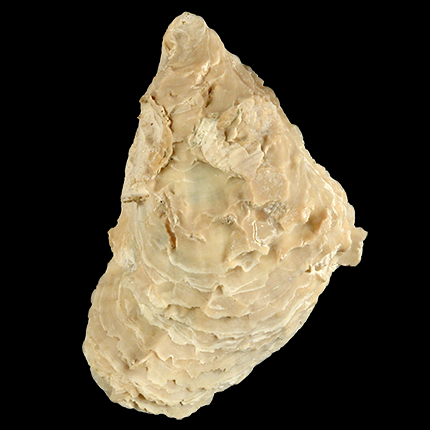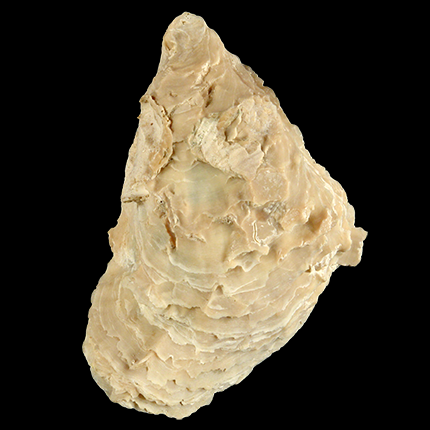
Striostrea

- Phylum: Mollusca
- Class: Bivalvia
- Order: Ostreida
- Family: Ostreidae
- Genus: Striostrea
- Common Name: Oysters
Overview
Striostrea Vialov, 1936.
Key morphological features: Shell outline irregular, often elongated but occasionally also subcircular. Umbonal cavity prominent, deep, and well-developed. Attachment scar often extends over a significant portion of the left valve. Adductor muscle scar reniform. Shell exterior characterized by fragile layer of prismatic, conchiolin-rich shell featuring imbricating riblets that flakes off easily. Shell interior is subnacreous and iridescent. Chomata are variable and not always present, but are most often large, elongate, and coarse. Shell structure is foliaceous and brittle. Source: Stenzel, H.B. 1971. Oysters. in Cox et al., eds., Treatise on Invertebrate paleontology, Part N, Mollusca 6, Volume 3. The University of Kansas and Geological Society of America. 272 pp.; Harry, H.W. 1985. Synopsis of the supraspecific classification of living oysters (Bivalvia: Gryphaeidae and Ostreidae). The Veliger 28(2): 121-158.
Geological range: Middle Eocene to Recent (source: Stenzel, 1971).
Geographic distribution: A distributional map for modern Striostrea may be accessed from OBIS. A distributional map for ancient Striostrea may be accessed from the Paleobiology Database.
Diversity: There are 3 recognized living species of Striostrea (WoRMS, unvetted). The Paleobiology Database recognizes 4 fossil Striostrea species (unvetted).
Paleoecology: Striostrea are sessile, filter-feeding bivalves that live permanently attached to hard substrates. Living Striostrea species generally inhabit shallow subtidal waters of full marine salinities, often occurring in high-energy environments.
Phylogenetic status: Unknown. Recent molecular phylogenetic analyses by Salvi et al. (2014) and Raith et al. (2016) could not resolve the phylogenetic status of Striostrea because of insufficient sequence data.
